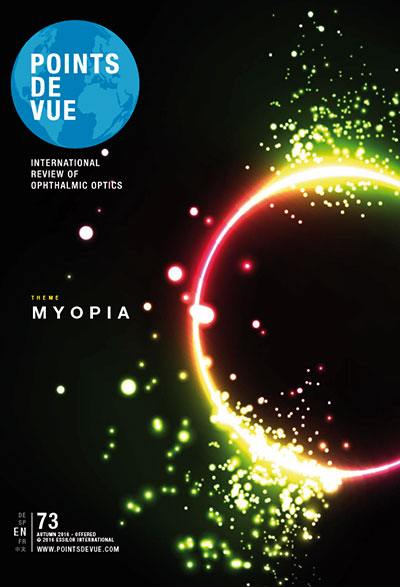 Cliquez ici pour lire l'articleSurprisingly enough for a non-infectious condition, myopia is reaching pandemic proportions across the world.
Cliquez ici pour lire l'articleSurprisingly enough for a non-infectious condition, myopia is reaching pandemic proportions across the world.
Record-breaking figures.
In the US and Europe, the prevalence of myopia has doubled over the last century, reaching 40-50% of young people (aged < 35) today. East Asia has been hit particularly badly. In countries such as Singapore, China and Korea, myopia affects around 80-90% of urban teenagers, compared to 10-20% sixty years ago. Recent work from the Brien Holden Vision Institute (BHVI) estimates that by 2050, five billion people, or half the world’s population, will be myopic and one billion, or 10%, highly myopic. A record-high myopia of -108 diopters has recently been compensated in Slovakia, Europe, representing new challenges for eye care practitioners and the ophthalmic industry. While the direct global socio-economic impact of myopia has not yet been determined, the economic burden of uncorrected refractive error (URE), which is largely caused by myopia, is estimated to be more than US$269 billion (per annum) – and this number is growing as the pandemic spreads.
The good news.
Over the past few months there has been a notable increase in alarming publications in scientific journals and the media on the myopia crisis. However, leading research centers and medical universities have been vigorously focused for some time on furthering understanding of the condition and developing new treatments for it. Etiology investigations have uncovered that myopia onset and its progression in children are correlations of both hereditary (nature) and environmental factors (nurture). The latter can be modified by encouraging greater exposure to natural light through outdoor activities and adopting good reading posture. We take the opportunity in this issue to share some perspectives from 25 experts – scientists and eye care practitioners – taking a look at their approach to understanding, correcting and treating myopia, plus preventing its progression in children.
Hope in sight.
Biochemical research for the myopia pathogenic mechanism will continue to be a hot topic. Luckily, the progress made over the past decade gives us reason for hope. At present, the overwhelming majority of myopia cases can be corrected with regular prescription eyeglasses, contact lenses or refractive surgery. There are also the solutions that correct and control myopia progression in children. Specific multifocal contact lenses, Myopilux® ophthalmic lenses and orthokeratology (Ortho-K) are all recognized as safe and effective procedures in the long term. While pharmacological interventions such as atropine eye drops at low concentration do not correct myopia, they effectively control its progression. There is no doubt tailor-made solutions help patients live their life to the fullest.
TO READ
Article from the magazine "Point de vue"


